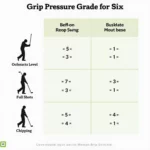Golf is not just a game; it’s a dance between precision, skill, and style. The right equipment can significantly impact your performance on the course, and among the essential gear, the golf glove is often overlooked. A glove that fits poorly can hinder your swing and diminish your overall experience. So, how tight should a golf glove be? This comprehensive guide dives into fit expectations, tips for choosing the right glove, and frequently asked questions to help you master your game.
Understanding Golf Glove Fit
When talking about the tightness of a golf glove, there are several factors to consider:
- Comfort: A well-fitted glove should feel snug yet comfortable. You don’t want it so tight that it restricts your movement. Conversely, a loose glove can slip or bunch up, affecting your grip on the club.
- Material: Different materials offer different fits. For example, leather gloves tend to stretch and conform to your hand over time, while synthetic gloves might retain their shape.
- Weather: The conditions you play in can also influence your choice. Wet conditions may require a slightly tighter fit to ensure grip, while hot weather might demand a bit more room for breathability.
General Guidelines for Fit
Here are some straightforward guidelines for assessing how tight a golf glove should be:
- Finger Length: The fingers should fit snugly without excess material at the fingertips. You should be able to feel the end of the glove on your fingertips.
- Hand Width: When gripping a club, the glove should provide support around the palm and not bunch up. A proper glove fit allows you to maintain a secure grip.
- Cuff Fit: The cuff should be snug but not constrictive. It should sit comfortably around your wrist without digging into the skin.
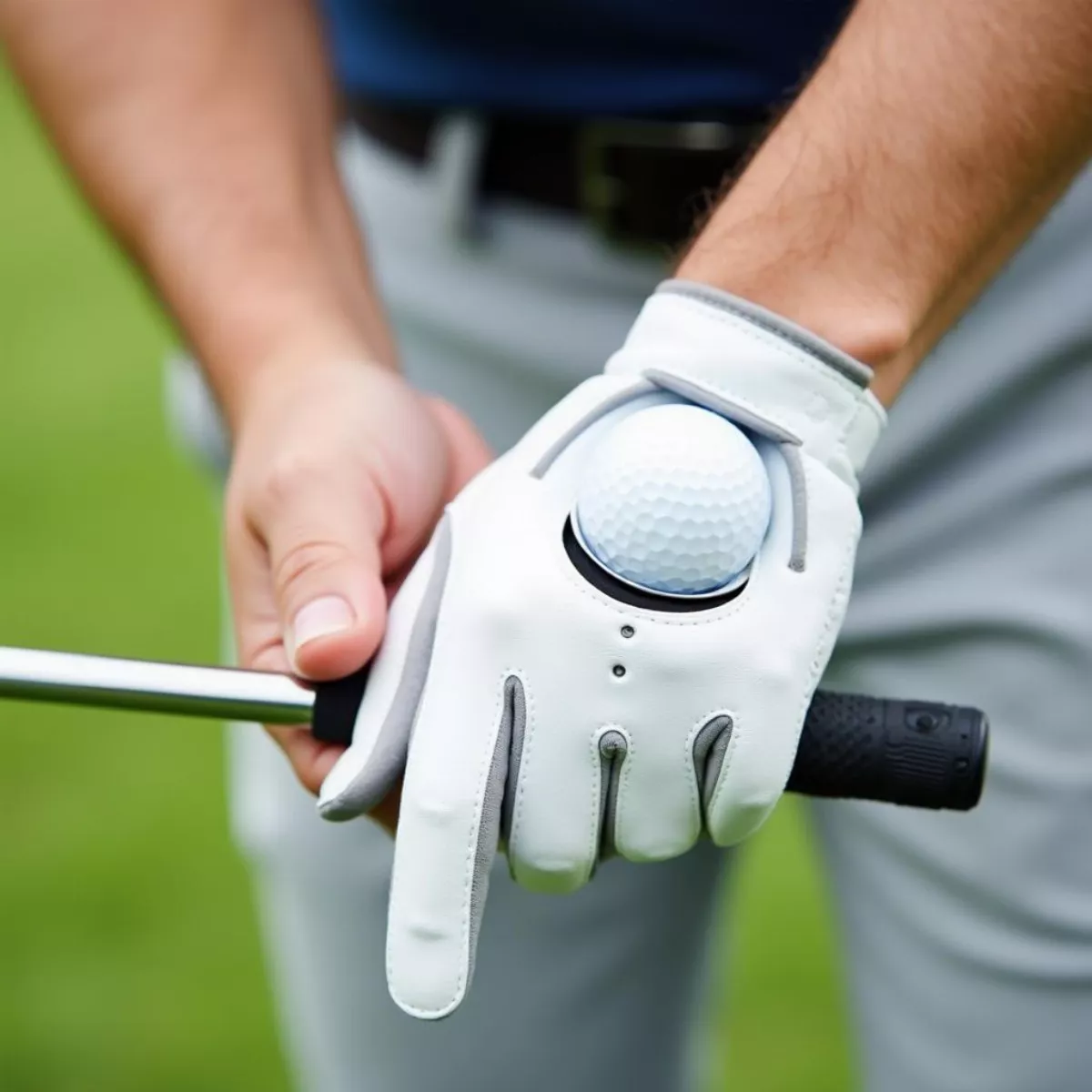 Golfer wearing a glove
Golfer wearing a glove
Quotes: As PGA professional Billy Horschel said, “A good glove is just as important as having the right clubs in your bag.”
Measuring for the Perfect Fit
To find your ideal golf glove size, consider measuring your hand. This can guide you in selecting the right size and fit:
- Measure Your Hand Width: Use a soft measuring tape and measure around the widest part of your palm, excluding your thumb.
- Measure Your Hand Length: From the tip of your longest finger to the base of your palm where it meets your wrist.
Table 1: Golf Glove Size Chart
| Size | Hand Width (inches) | Hand Length (inches) |
|---|---|---|
| Small | 7.0 – 7.5 | 6.5 – 7.0 |
| Medium | 7.5 – 8.0 | 7.0 – 7.5 |
| Large | 8.0 – 8.5 | 7.5 – 8.0 |
| XL | 8.5 – 9.0 | 8.0 – 8.5 |
| XXL | 9.0 – 9.5 | 8.5 – 9.0 |
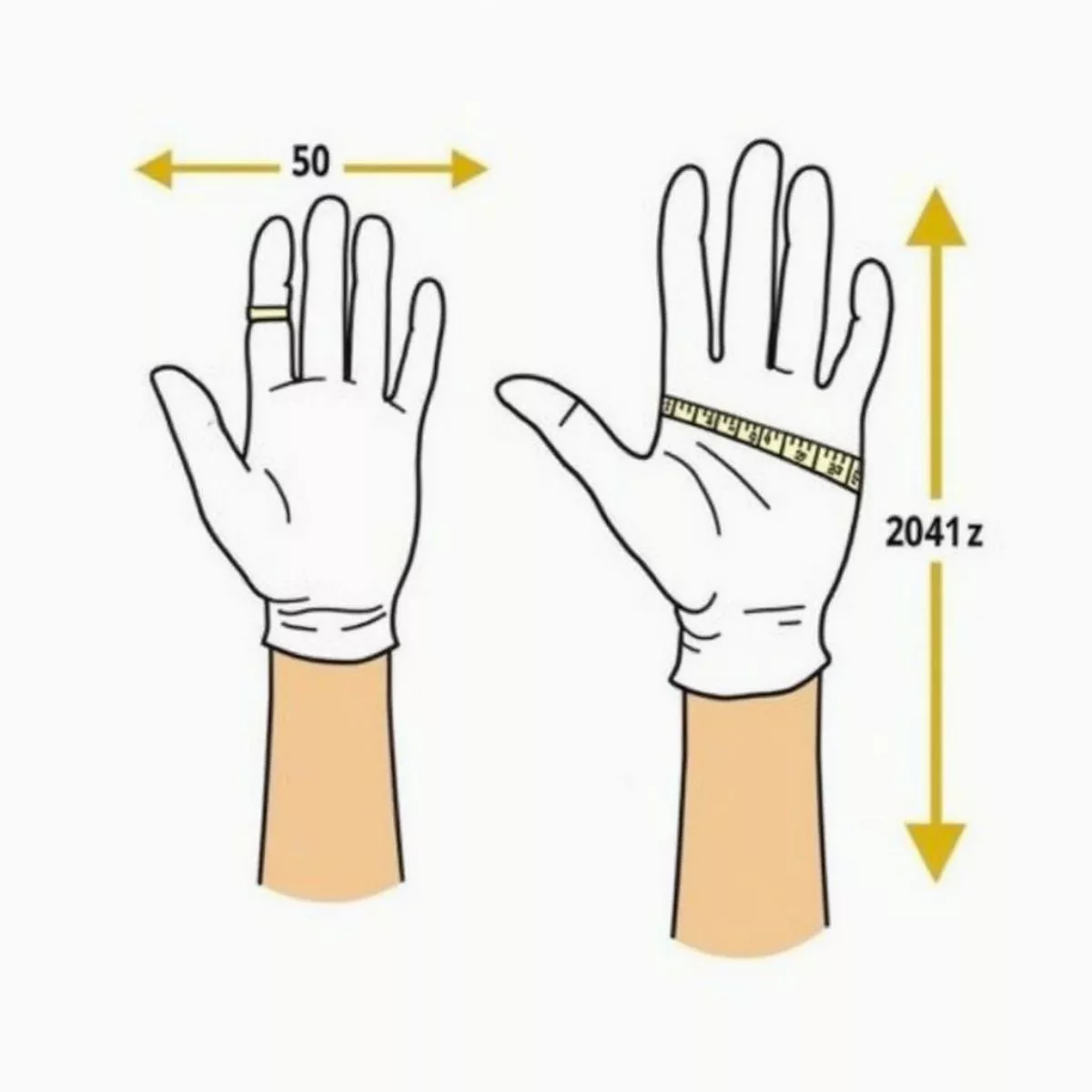 Measuring hand for golf glove size
Measuring hand for golf glove size
Tip: Try on different brands, as sizes can vary between manufacturers.
Additional Factors to Consider
When buying a golf glove, think about the following:
- Type of Play: If you are a frequent player or participate in tournaments, investing in a higher-quality glove for increased durability makes sense.
- Grip Technology: Many modern gloves come with grip-enhancing technology. If you’re in hot and humid conditions, consider gloves designed for this purpose.
- Break-in Period: Leather gloves, in particular, might need some time to break in. They will stretch over a few rounds, so buy slightly tighter if you are choosing leather.
Maintenance Tips for Your Golf Gloves
To ensure your golf gloves maintain their fit and performance, consider these maintenance tips:
- Cleaning: Regularly clean your gloves using a damp cloth. This removes sweat and dirt, preserving the material’s integrity.
- Drying: Avoid throwing your gloves in the dryer. Instead, let them air dry at room temperature.
- Storage: Store your gloves in a cool, dry place and not crumpled in your golf bag. This helps them retain their shape.
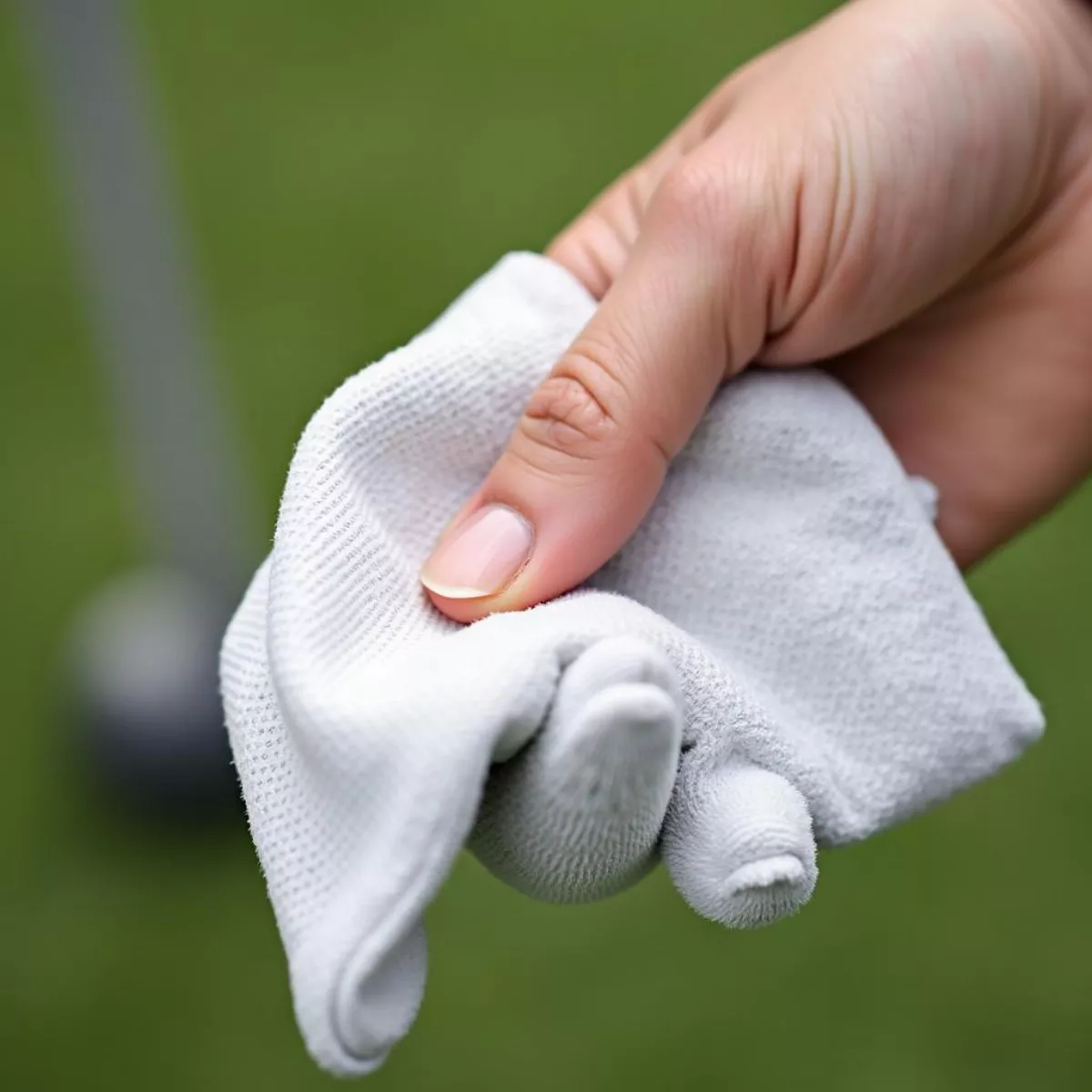 Cleaning a golf glove with a damp cloth
Cleaning a golf glove with a damp cloth
Key Takeaways
- A golf glove should be snug but not restrictive, allowing for comfort and flexibility.
- Proper fitting involves checking finger length, hand width, and cuff fit.
- Measure your hand to get accurate sizing, and consider the golf glove size chart referenced above.
- Maintain your gloves by adequately caring for them to extend their lifespan and performance.
FAQ Section
Here are some frequently asked questions about golf glove fit and care:
1. How can I tell if my glove is too tight?
If you notice discomfort, restricted circulation, or difficulty in gripping a club, your glove may be too tight.
2. Should I wear a glove on both hands?
Typically, golfers wear a glove on their lead hand for better grip. However, some players prefer wearing a glove on both for comfort.
3. How often should I replace my golf gloves?
Replace your gloves when they show signs of wear, such as thinning material or loss of grip, typically every 10-15 rounds.
4. Can gloves stretch out over time?
Yes, especially leather gloves will stretch slightly after multiple uses, adjusting to your hand shape.
5. Are expensive gloves worth it?
Higher-end gloves often utilize better materials and technologies that enhance comfort, durability, and grip. They can be a worthwhile investment for avid golfers.
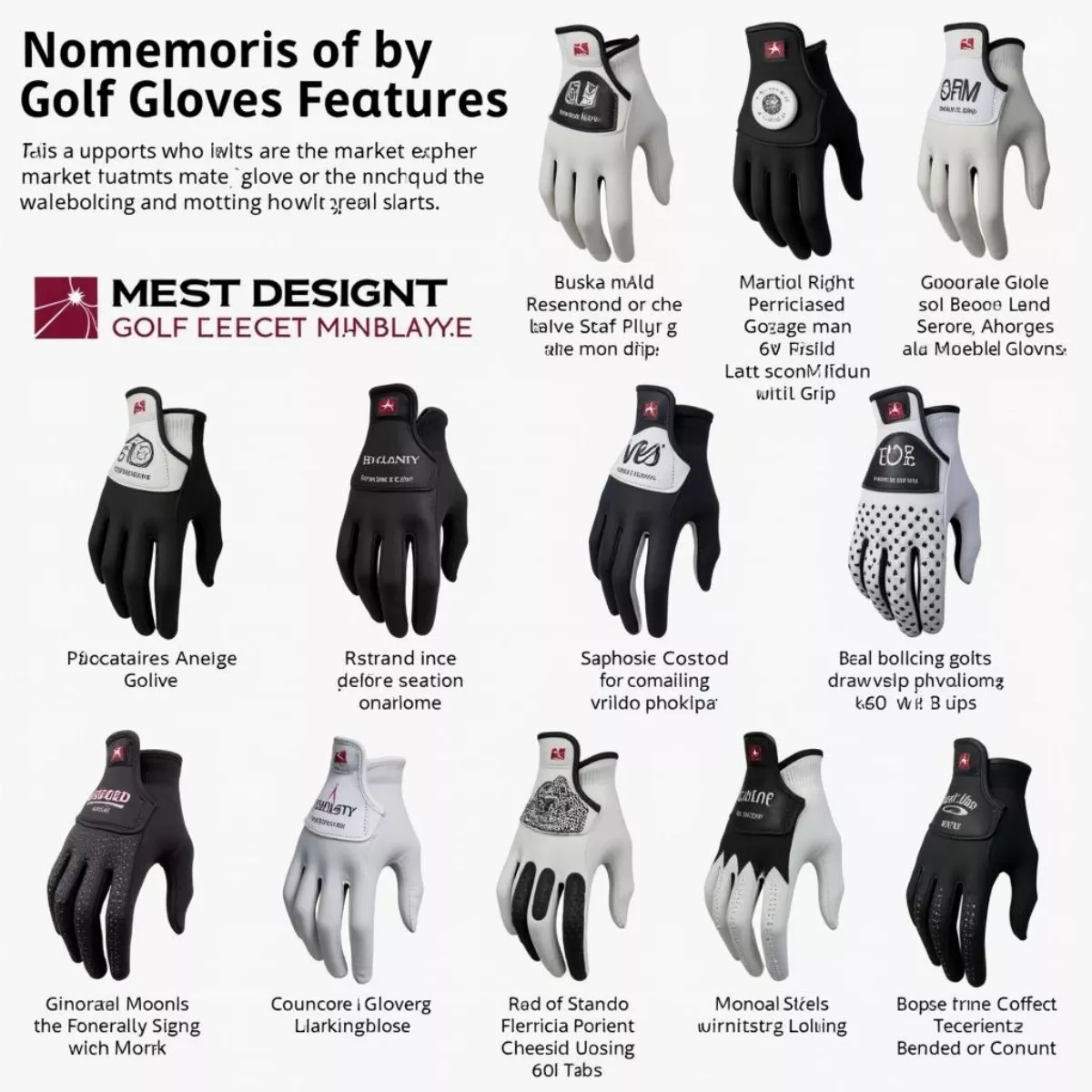 Various golf gloves on display
Various golf gloves on display
6. What material is best for golf gloves?
Common options include leather, synthetic, or a combination. Leather gloves offer a great feel, while synthetics can provide better breathability.
7. How do I break in a new golf glove?
Wearing it during practice sessions will help. Perform some light exercises and swings with the glove to loosen it up.
8. Is it necessary to buy a new glove each season?
Not always, but if your glove shows signs of wear or if you play frequently, it’s a good idea to evaluate it at the start of a new season.
9. Can a glove improve my game?
Absolutely! A well-fitted glove enhances your grip, which can lead to more consistent shots.
10. What about sizing for juniors or women?
Junior and women’s gloves come in different sizing categories specifically designed for smaller hands. Always refer to the sizing chart.
In conclusion, how tight should a golf glove be? A snug and comfortable fit contributes to better performance on the golf course. Remember, the right glove not only improves your grip but also adds a layer of confidence to your swing. Explore different brands and materials to find the perfect match for your playing style and conditions.
For additional tips on choosing golf equipment, check our other articles on golf club fitting and the best golf balls for beginners. Happy golfing!

